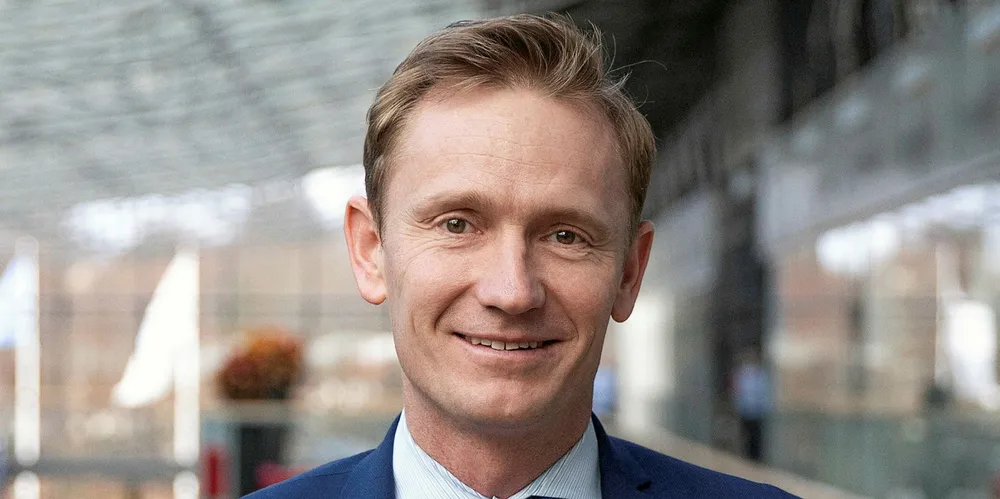Billions of dollars lined up for the big US offshore wind build-out: Orsted chief
Nascent sector is waiting for federal clarity before unleashing massive expansion plans, North American head for the Danish giant Thomas Brostrøm tells Darius Snieckus

Even those Americans in the know about the country’s burgeoning offshore wind industry could be forgiven for thinking the sector has slipped into stasis since the 30MW Block Island array was switched on off Rhode Island, in the US Atlantic, in 2016.
The reality stands in stark contrast. States along the Eastern Seaboard have grown more ambitious almost by the month through a series of leasings that have seen vast swathes of maritime acreage awarded to developers — with analysts forecasting that as much as 30GW will be built by 2030, bringing with it a massive boost to economic development and employment in New England.
For all this, the offshore wind sector continues to battle industrial crosswinds, including the stalling of its lead-off utility-scale project, the 800MW Vineyard Wind off Massachusetts — held up for a “supplementary” environmental review by the Department of the Interior’s Bureau of Ocean Energy Management (BOEM) — and ongoing permitting problems elsewhere.
So the industry took a big morale boost from the news that first steel had been installed at the first offshore wind project in federal waters, the 12MW Coastal Virginia Offshore Wind (CVOW) pilot. None more so than Thomas Brostrøm, the head of the North American division of Denmark’s Orsted, a first mover in US offshore wind that has built up a market-leading 2.9GW pipeline of projects, including CVOW — all of which is due to be commissioned by the end of 2024.
“You can see what offshore wind could mean to communities [in these coastal states], to job creation, to power production as the cost [of energy] has come down, how we are moving towards a greener society — all that offshore wind can contribute.”
But with Vineyard Wind delayed by BOEM’s follow-up environmental impact assessment — and Orsted’s own 120MW Skipjack project off Delaware held up by a slow-rolling federal permitting process — Brostrøm knows better than most that the optics for the US sector’s build-out remains “less than entirely clear”.
“The next phase — delivering first projects — is where we are. We are all waiting on greater visibility and clarity from the federal level. The ‘table is set’, but we are hopeful that we will be able to move forward very soon,” he says.
“[The industry] accepts it is a reality that we have seen some of the earlier projects more exposed to the federal process.”
“I don’t think it unreasonable that that an authority like the Department of the Interior starts up a cumulative study such as the [supplementary environmental review], but that’s now lasted long enough, we need to move on.”
“As an industry we have lined up billions of dollars that need to get invested — not least in the wake of Covid-19,” Brostrøm adds. “This would be a fantastic catalyst for economic growth and job creation that is very much needed [in the currently economic downturn].
“And isn’t four or five years in the future, it starts now, in early-stage project development.”
First steel in the water at the CVOW pilot, therefore, has a particularly powerful symbolism. The two-turbine pilot — being built off Virginia with 6MW Siemens Gamesa turbines and foundations sailed over from Europe — is a toe in the water for Orsted and project partner Dominion Energy for the 2.6GW mega-project that comes next on the 112,800-acre lease area, where the German-Spanish OEM will supply its newly launched 14MW model.
“This is a strong signal that the start of the project execution phase is happening — and it shows it can be done at a very challenging time,” says Brostrøm. “It shows that this industry is real and, as a company, gives us important experience on building in federal waters as we develop our supply chain here.”
Orsted — the world’s largest offshore wind developer with a 16GW pipeline of projects — has market-leading ambitions in the US, with almost 3GW on the way in the Atlantic via a portfolio that includes the Bay State, Constitution, Garden State, Revolution, South Fork, Sunrise, Ocean Wind and Skipjack projects. In total, the company aims to build up to 8GW in US waters by the end of the decade.
Despite the current travails, says Brostrom, he is “very happy about the US market and the way we are developing our portfolio”, with the focus now on “getting it executed and delivering the 2.9GW over the next few years”. He points to the recent US Coast Guard ruling that a wind farm turbine layout proposed by five offshore leaseholders, including Orsted, would allow for the safe navigation of shipping and fisheries vessels, clearing the way for 7GW of projects off New England.
“One of the clear benefits of offshore wind — big volumes,” says Brostrøm. “Whether we get to these volumes in the short- to mid-term, maybe not, but you certainly will over time. This is why states in the US Northeast are setting such ambitious targets for offshore wind. This is why the job creation and economic development potential is so great. In fact, this is why we are seeing an intensified interest from the international oil & gas companies in stepping into offshore wind. The scale is so attractive.”